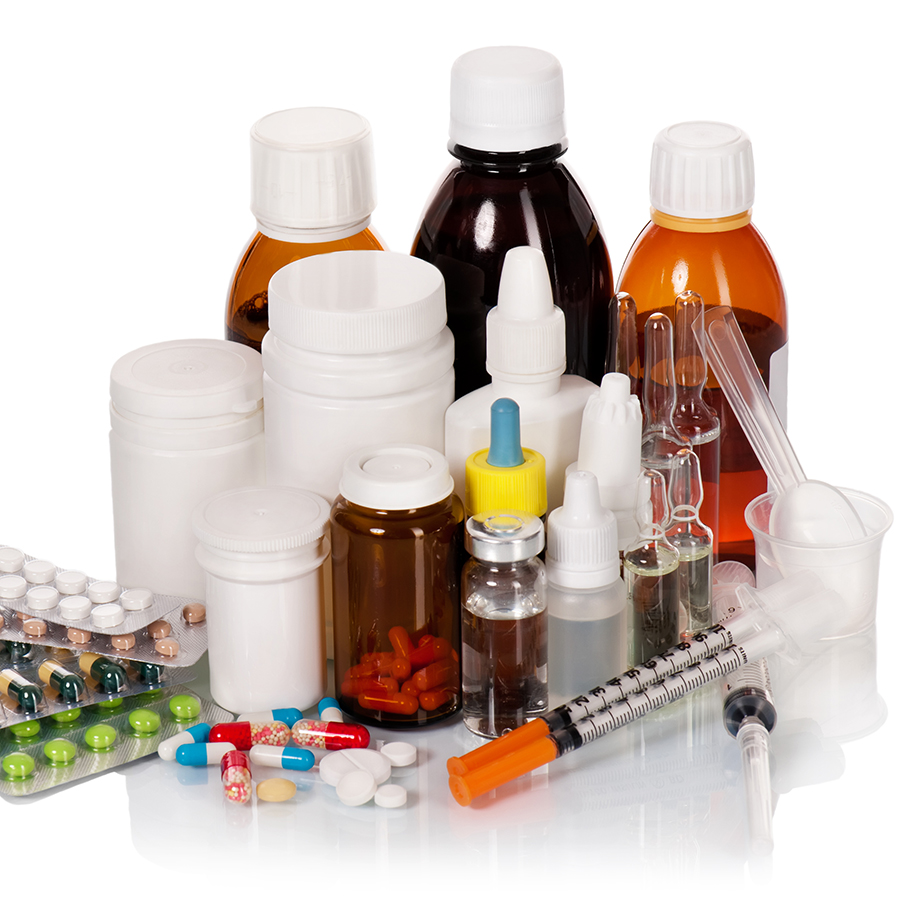Safety, Efficacy, and Quality Remain Top Priorities as We Continue Our Work to Expand Access to Cost-Saving Generic Drugs for the American Public
By: Janet Woodcock, M.D., Director, Center for Drug Evaluation and Research
Millions of Americans have difficulty paying for their prescription medications.
To provide Americans access to medicines they need, the U.S. Food and Drug Administration (FDA) places a high priority on working to ensure a supply of safe, effective, and cost-saving generic drugs, each manufactured under our rigorous quality standards. FDA-approved generic drugs now account for 90 percent of the prescriptions dispensed in the United States, and, during the last decade, competition from generics has saved the health care system about $1.67 trillion.
The success of the FDA’s generic drug program — bolstered by recent efforts such as our Drug Competition Action Plan — has often been described in terms of our ability to efficiently determine the safety and efficacy of generic drugs under review for approval and how many new generics we subsequently approve as a result. However, these metrics for efficiency and quantity would not be relevant if we cannot also ensure that our review and approval process meets the highest standards, and that once approved, these drugs, no matter where they are made, are manufactured under conditions that maintain good quality. Safety, effectiveness, and quality are all vital components to the success of our program. Let’s take a closer look.
Intensive Assessment Prior to Approval — and Beyond
The FDA’s review process for new generic drug applications ensures that generic medications perform the same way in the human body, have the same active ingredients, and have the same conditions of use as their counterpart name brand medication. Generic drugs are held to a rigorous approval standard and are as safe and effective as brand name drugs. Importantly, generic drugs manufactured outside the U.S. must meet the same approval standards as those made domestically; and if they do not meet the FDA’s standards, the FDA can deny them entry into the U.S.
After a drug is approved and is on the market, patients and health care professionals can report adverse events (unexpected side effects) or quality problems to the FDA’s MedWatch program, which helps the agency track potential new safety or quality issues. When we identify a possible drug safety or quality concern, a multidisciplinary team reviews the pertinent data. For adverse events, this includes other reports of adverse events, controlled clinical trials and epidemiologic studies, electronic health care databases, estimates of drug usage and adverse drug experience reporting rates, estimates of background rates of the adverse events, the pharmacology of the drug in relation to the identified safety concern, and other relevant information. For potential quality problems, a multidisciplinary team will also review manufacturing and past inspection data, and the FDA may conduct product testing and perform additional inspections of manufacturing facilities. The FDA may take regulatory action(s) to improve product safety and protect the public health, including a ban on importation, enforcement actions, updating a product’s patient and doctor information, restricting use of the drug, communicating new safety information to the public, or, in rare cases, removing a drug from the market.
In 2018, we approved or tentatively approved more than 1,000 generic drugs, about the same as the number we approved in 2017. Having more new generic drugs available reduces costs, but it also enhances access, a key safety factor. For instance, market availability of a generic drug that is made by only one or very few manufacturers can directly impact public health when a shortage arises based on an issue with one or more of these manufacturers. We’ve learned from natural disasters and other unforeseen events that diversification of production facilities is a key component of long-term safety. Medicines produced in multiple locations around the world help keep the U.S. drug supply strong and help lessen the impact of shortages when they occur.
To further help ensure access, we prioritize review of generic drug applications for drugs in shortage. We also prioritize the review of generic drug applications for which there are no blocking patents or exclusivities. The aim is to promote competition so that there are at least four approved applications for each product (including the brand drug). The FDA’s data show that drug prices significantly decrease once there are at least three generic versions of the same brand name drug on the market.
Quality Assurance
Generic drugs are held to the same standards of quality as those required for brand name drugs. As part of our generic drug review and approval process, FDA scientific experts assess each drug product application to verify the active ingredients and drug product have adequate quality controls and are going to be manufactured to meet quality standards. We inspect facilities before a new product is marketed and routinely after approval to ensure that companies are complying with current good manufacturing practice requirements.
Over the years, the FDA’s Center for Drug Evaluation and Research (CDER) has implemented programs designed to ensure the quality of FDA-approved medications. Perhaps most notable is the creation of the FDA’s Office of Pharmaceutical Quality (OPQ) in January of 2015. OPQ works to identify and respond to quality issues — no matter where they may arise in the world — before they become problems, and it oversees drug quality throughout the product lifecycle, before and after approval. OPQ’s Office of Surveillance oversees the quality of all drug manufacturing facilities and takes steps to improve the overall state of pharmaceutical manufacturing.
To enhance drug quality, the FDA is leading efforts to help industry develop cutting-edge manufacturing technologies — such as continuous manufacturing — and working to ensure the agency’s efforts to regulate these processes are not burdensome. As a result, companies are starting to use advanced technologies that not only increase manufacturing efficiency and decrease cost, but also make medicines of more reliable quality.
The FDA’s focus on quality does not end at the production facility. Most drugs journey from plant to pharmacy or other points of delivery, and we work to ensure a safe supply chain. The U.S. drug supply chain is among the safest in the world, and the FDA works to make every link in the supply chain secure for patient access to safe and effective medicines.
Despite these measures, there may still be “bad actors” that fail to meet our exacting standards. Over the past four years, CDER’s Office of Compliance has substantially increased the number of warning letters to human drug manufacturers regulated by the FDA. In FY 2018, the agency issued nearly five times as many warning letters to human drug manufacturers as in FY 2015. The FDA does not believe that increased numbers of warning letters reflect a growing problem in drug quality, but rather our ability to best utilize our resources to target problem areas. We use “risk-based” targeting to prevent, uncover and combat data and manufacturing problems. Risk-based means that we strategically direct our inspection and oversight efforts toward facilities most likely to exhibit quality issues in need of resolution. We have also leveraged our abilities to oversee a global manufacturing market by building relationships with other international regulatory agencies. Among many other synergies generated by these partnerships, we utilize the results of inspections done by many countries in the European Union to avoid inefficient and unnecessary duplication of inspections.
The FDA conducts domestic and foreign inspections with comparable depth and rigor. We use the same highly trained investigators for both — and they conduct the inspections in accordance with the same compliance programs. Our policy for prioritizing and scheduling inspections at higher risk facilities is based on many factors, such as a facility’s compliance history, recall trends, time since last inspection, inherent risk of the drug being manufactured, and processing complexity. We use an annual model that covers both generic and brand name manufacturers. In many cases, we must announce our foreign inspections to be sure the firm is operational and to avoid wasting inspection resources. However, when we determine the need to do an unannounced inspection, we can and do conduct such operations. Over the past several years, FDA investigators have conducted an increasing number of unannounced inspections at foreign manufacturing facilities. When significant issues are uncovered at a foreign manufacturing facility, the agency acts swiftly to protect patients by placing the facility on import alert to block their medicines from reaching U.S. patients.
Certain bad actors may falsify data that the FDA uses to evaluate a drug’s safety and efficacy. During inspections, FDA investigators have the ability to access data through a company’s technological systems, making it possible for the investigator to discover when data have been removed or manipulated.
Although it only takes one bad actor to create a health issue for patients, it is important to note that the vast majority of facilities and companies pass our inspections and are manufacturing safe, effective and high-quality medicines. FDA laboratory testing for drug quality has consistently shown medicines manufactured in foreign countries meet U.S. market quality standards using testing standards set by the United States Pharmacopeia (USP) or submitted in marketing applications.
Our Strongest Generic Drug Program to Date
As an agency, we have never been more confident in the safety, effectiveness and quality of FDA-approved generic drugs than we are today. We’ve approved more generics lately because we’ve improved processes and hired many staff — more than 1,000 in recent years — to meet the workload demands. Our standards have not wavered, and our reviews are more rigorous than ever. We’ve developed many new initiatives designed to facilitate and not impede new competition — so they can be effective in helping to make sure that patients have access to lower-cost prescription drug options. As part of the Generic Drug User Fee Amendments, as well as through our own new efforts, we have put policies in place to promote generic drug development in areas where there’s inadequate competition. This includes a focus on developing safe and effective generic versions of complex drugs — a critical factor in patient care and working to help control drug costs.


